
Article
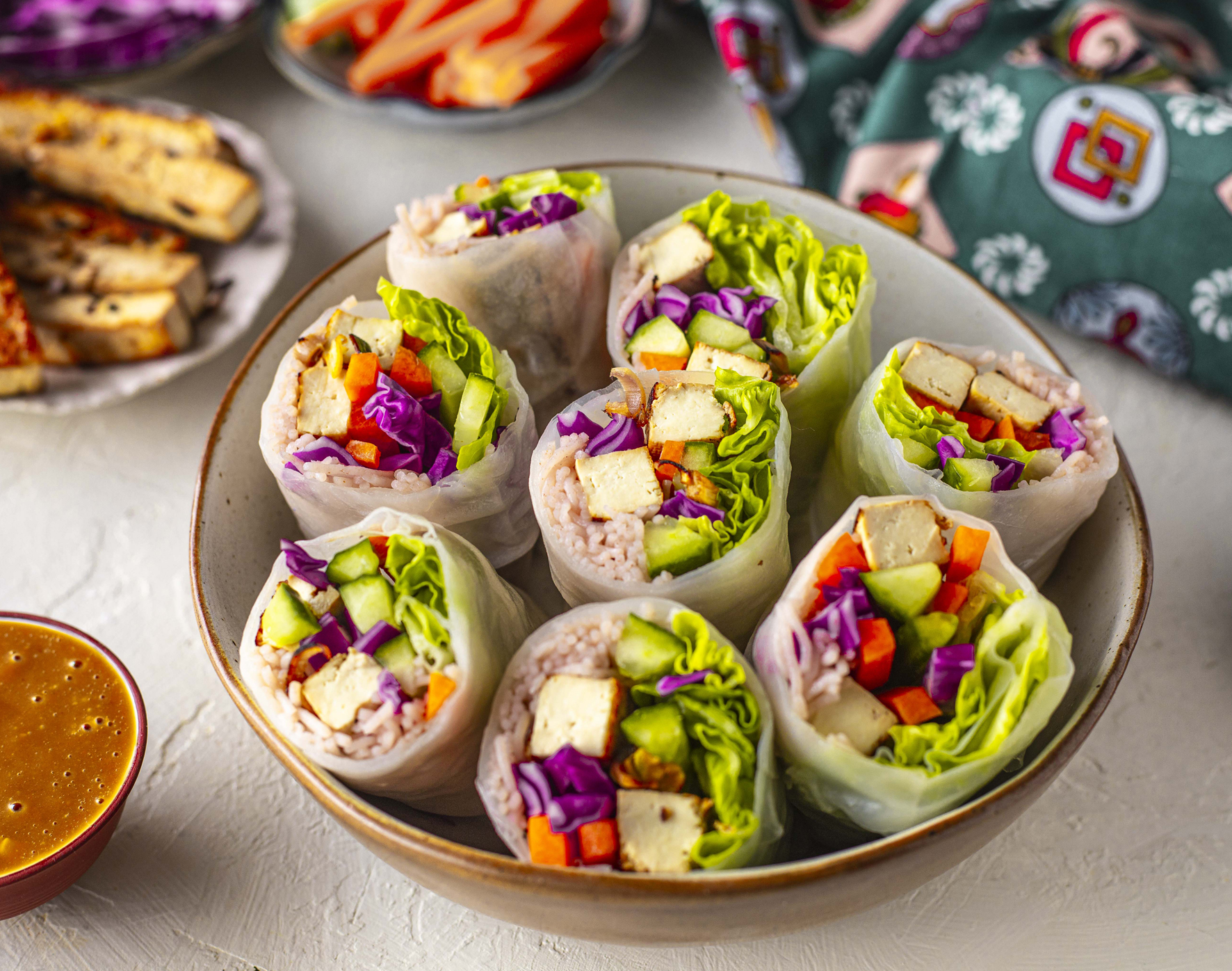
We’ve all heard that age-old health advice to ‘eat the rainbow’ … but how does eating more colourful fruits and veggies actually benefit your health? Here’s everything you need to know, and some tips to get you started.
The answer is surprisingly simple! Health and nutrition experts say that incorporating lots of colourful wholefoods into your meals is one of the best ways to ensure you’re consuming a wide array of vitamins, minerals, antioxidants, fibre, and nutrients every day.
Fruits and vegetables get their eye-catching hues (as well as their tastes and aromas) from natural bioactive compounds called phytonutrients – so many of the brightest plant-based foods also happen to be the richest in phytonutrients.
And the really interesting thing is that, just as different fruits and veggies contain different vitamins and minerals, each colour is also associated with different phytonutrients and health benefits. The greater the variety, the better all ’round!
Keep reading to get a taste of the rainbow – along with the main phytonutrients, vitamins, and minerals fruits and veggies of each colour can provide.
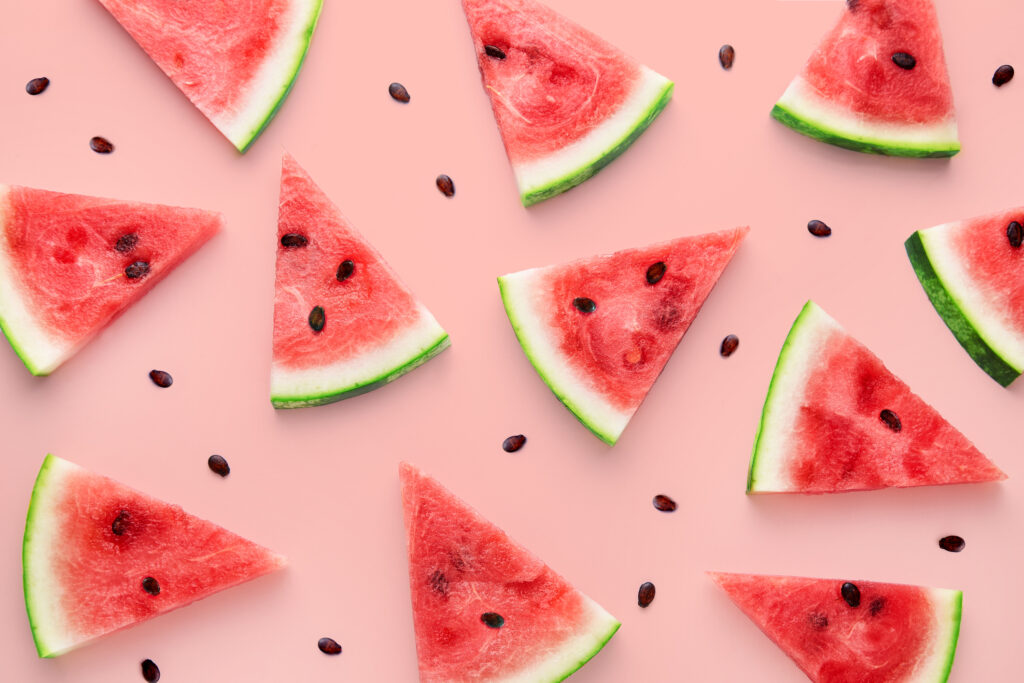 Main phytonutrients: Lycopene, a powerful antioxidant that may help protect cells from damage
Main phytonutrients: Lycopene, a powerful antioxidant that may help protect cells from damage
Vitamins & minerals: Folate, potassium, vitamin A, vitamin C, vitamin K1
Found in: Apples, beets, capsicums, cherries, cranberries, grapefruit, guava, raspberries, red grapes, red onions, strawberries, tomatoes, tomato paste, tomato sauce, watermelon
Benefits:
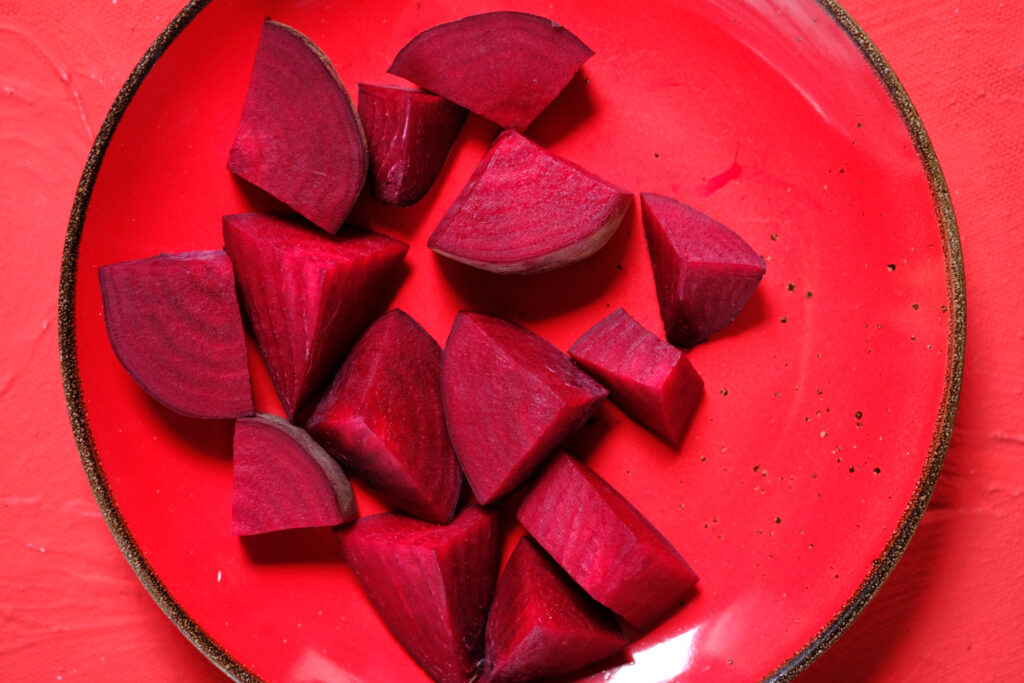
Main phytonutrients: Betalains, a pigment with a number of anti-inflammatory properties
Vitamins & minerals: Fibre, folate, magnesium, manganese, potassium, vitamin B6
Found in: Beetroot, Swiss chard
Benefits:
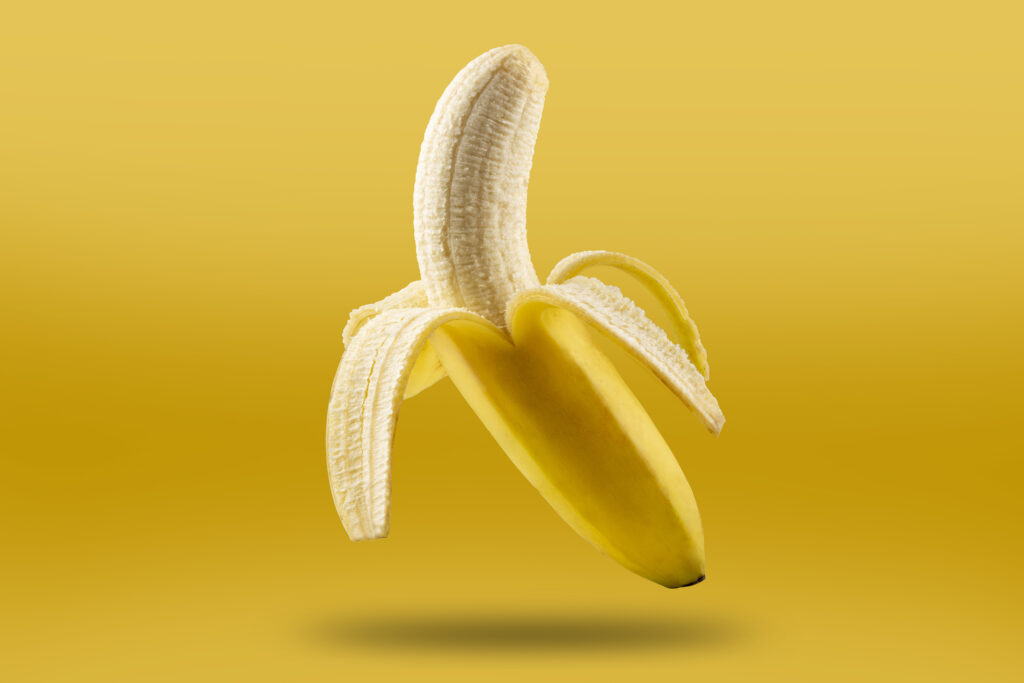
Main phytonutrients: Carotenoids (beta carotene, alpha carotene, beta cryptoxanthin), which belong to the vitamin A family and support intracellular communication
Vitamins & minerals: Fibre, folate, potassium, vitamin A (beta carotene), vitamin C
Found in: Apricots, bananas, cantaloupe, carrots, corn, mango, oranges, peaches, pineapple, pumpkin, sweet potatoes, tangerines, winter squash (butternut, acorn), yellow peppers
Benefits:
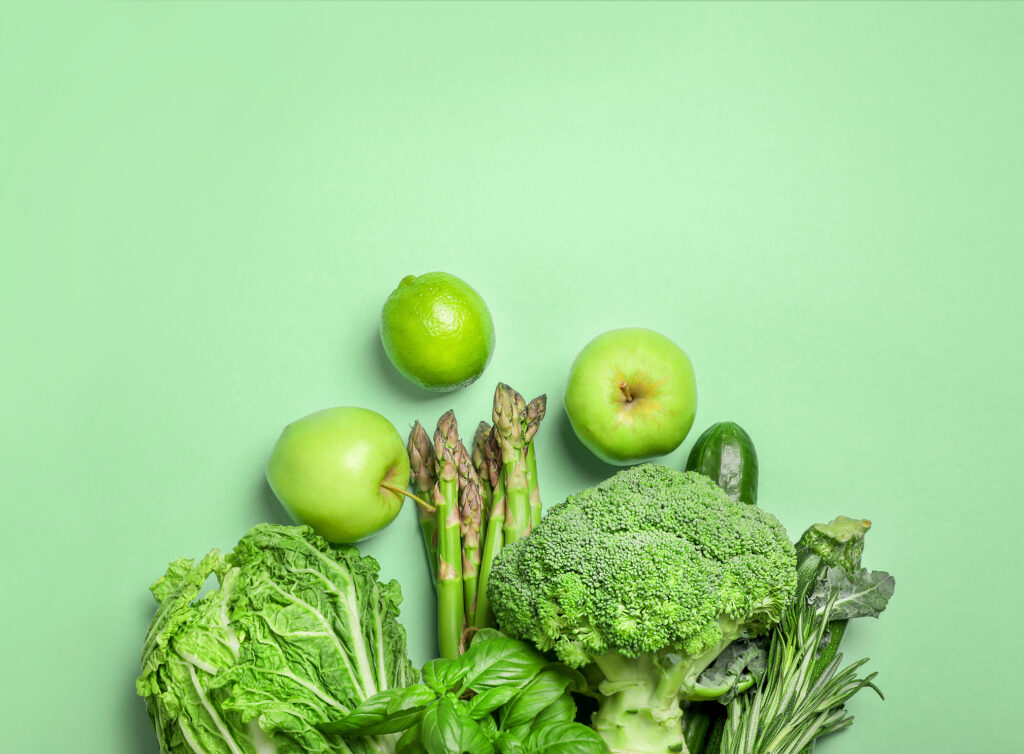
Main phytonutrients in leafy greens: Carotenoids (see above) and chlorophyll, a pigment with detoxifying properties
Main phytonutrients in cruciferous greens: Indoles, isothiocyanates, and glucosinolates, which inhibit cancer-causing compounds
Vitamins & minerals: Fibre, folate, magnesium, potassium, vitamin A (beta carotene), vitamin K1
Found in: Alfalfa sprouts, avocados, artichokes, asparagus, broccoli, Brussels sprouts, cabbage, collard greens, green tea, green herbs (basil, coriander, mint, rosemary, sage, thyme), kale, kiwi fruit, spinach
Benefits:
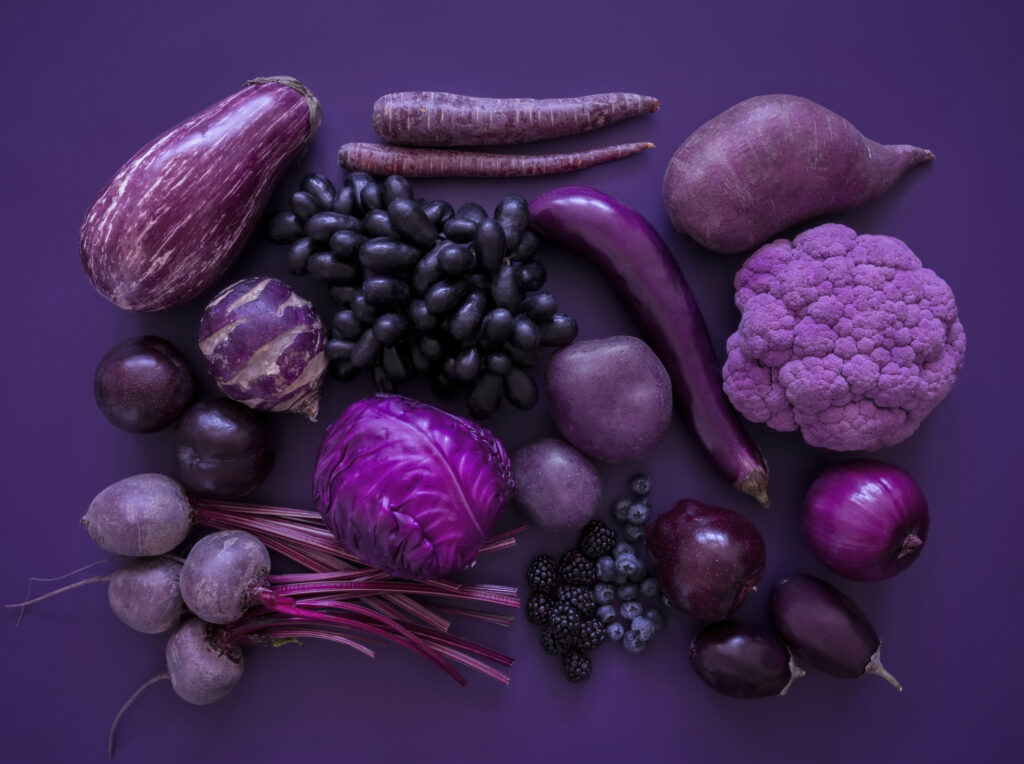
Main phytonutrients: Anthocyanins, powerful antioxidants believed to delay cellular aging
Vitamins & minerals: Fibre, manganese, potassium, vitamin B6, vitamin C, vitamin K1
Found in: Blackberries, blueberries, Concord grapes, eggplant, elderberries, figs, lavender, plums, prunes, purple cabbage, raisins
Benefits:
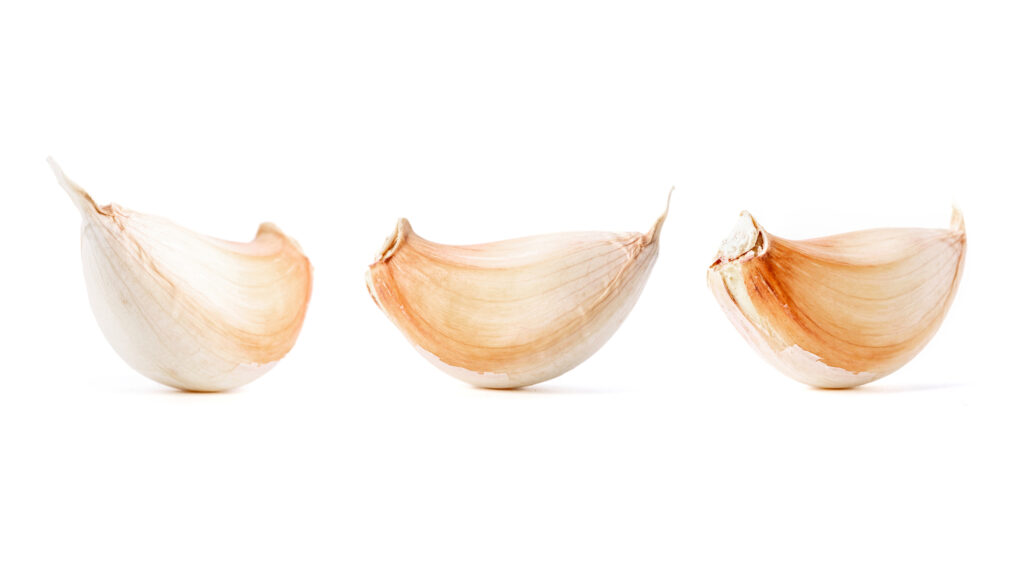
They may not be quite as vivid as other foods on this list, but most white and brown wholefoods are super nutritious too!
Main phytonutrients: Antioxidant pigments called flavonoids (including flavonols, flavones, and anthoxanthins)
Main phytonutrients in the onion family: Allicin, which has anti-bacterial, anti-viral, and anti-tumor properties
Vitamins & minerals: Fibre, folate, magnesium, manganese, potassium, vitamin B6, vitamin K1
Found in: Bananas, cauliflower, daikon radish, garlic, ginger, leeks, mushrooms, onions, parsnips, turnips, white potatoes
Benefits:
It’s always good to have plenty of options in the fridge, so set yourself up for success with a colourful shopping cart. If it’s all looking a bit monochromatic, try swapping a few things out to include more colourful wholefoods in your grocery haul.
Aim to include at least two to three different-coloured fruits or veggies in every meal, and at least one in every snack (e.g. crackers and dip, edamame, or banana slice). You don’t have to eat every single colour every day – instead, aim to have a few serves of each colour throughout the week.
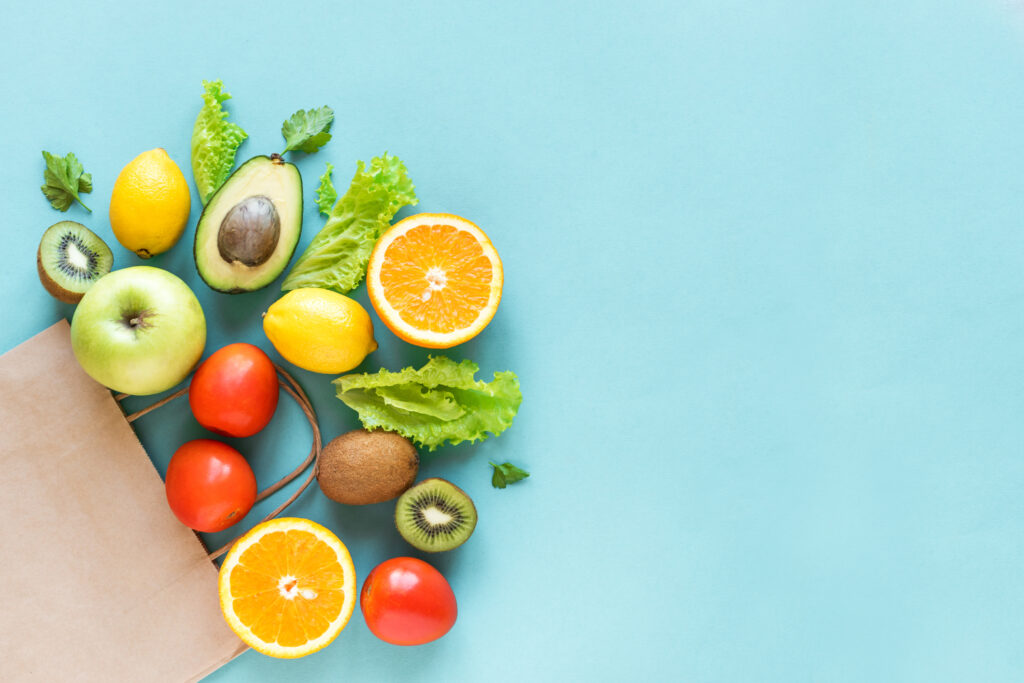
It’s best to go for seasonal fresh produce if you can, but frozen produce is just as nutritious and affordable, so also a great option. If you need to use canned fruits and vegetables, look for veggies with no added salt, and fruit packed in water or natural juice, not sugary syrup.
By setting this rainbow-inspired intention at mealtimes, we all have the power to be the artists of our own health and nutrition. Start by loading up your palette plate with colourful plant-based foods, and you’re already well on your way to painting a beautiful, balanced picture 🎨
To help you on your journey, we’ve got heaps more nutrition tips here and in our FREE veg starter kit.
And if you need some meal inspiration, check out these brilliant vegan Instagram accounts – all packed with ideas for recipes that are easy to replicate and bursting with colour.
We love seeing what vibrant meals other foodies have come up with … but remember that not every meal has to be a masterpiece. Sustainability is key, and often that looks like keeping it simple – throwing together veggies from your fridge into a colourful stir-fry, for example, or combining them in a nourishing soul bowl.
As long as you’re focussing on using a variety of fresh ingredients and finding flavours that you really enjoy, you’ll be setting yourself up with the meal-building skills you need to live a brighter, tastier, and healthier life. ![]()

Having grown up in a “meat and 3 veg” kind of household, Liv’s embarrassed to admit that she was a bit of a one-note chef until she began exploring the world of plant-based food. Vegan cooking has given her a whole new appreciation for the symphonies of flavours that simple, nourishing wholefood ingredients can create. (Even eggplant, once her greatest nemesis, is now — in a delicious, miso-glazed redemption arc — her all-time favourite veg.)